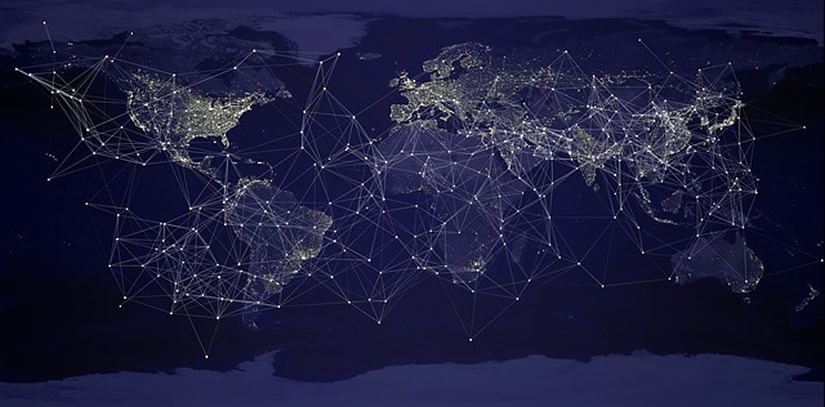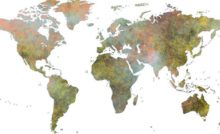By Bedassa Tadesse, University of Minnesota Duluth and Roger White, Whittier College
In nearly every country that hosts foreign-born citizens, immigration emerges as a lightning rod for controversy. The economic realities of immigration, however, are far more complex than the negative sound bites suggest.
Far from being a burden, as critics claim, immigrants play pivotal roles in driving innovation, enhancing productivity and fostering economic growth in their adopted countries. They also elevate their adopted and origin countries’ standings in global value chains, contributing to economic resilience.
We are economists who study global trade and migration, and our recent work reveals that immigrants contribute far more to the economic fabric of nations than previously understood.
By facilitating what’s known as “trade in value added,” or TiVA, immigrants play a crucial role in helping countries specialize their production, move up the value chain and significantly enhance trade sophistication.
Moving up the value chain means progressing from producing basic, low-value goods to more complex, higher-value products. This shift involves improving skills, technology and production techniques, allowing a country to capture more economic value and develop advanced industries.
Free Reports:




So, what exactly is trade in value added, and why is it important?
In today’s global economy, products are rarely made entirely in one country. Instead, different stages of production occur across multiple nations. TiVA measures each country’s contribution to a final product, providing clearer insight into global value chains. For instance, while an iPhone may be assembled in China, its components come from various countries, each adding value.
Measuring the effect on global value chains
Our study found that a 10% increase in immigrants from a particular country residing in one of the 38 Organization for Economic Cooperation and Development member states leads to a 2.08% increase in the value added from their home country that becomes embedded in their host country’s exports to the world.
This effect was strongest in the services sector, followed closely by agriculture and manufacturing.
To understand how this works, consider Indian software engineers in Silicon Valley. Their understanding of the U.S. tech industry and India’s IT sector can lead to partnerships. These partnerships lead to Indian firms providing specialized coding services for American tech giants. The result? Higher-value U.S. tech exports that incorporate Indian expertise. This perfectly illustrates how immigrants boost trade in value added.
Or take Chinese immigrants in Italy’s fashion industry. Their cultural knowledge might help Italian luxury brands tailor products for the Chinese market and connect Italian designers with highly skilled textile workers in China. The result? Italian fashion exports incorporate Chinese craftsmanship, elevating both countries’ global fashion value chain positions.
Our findings show that immigrants are pivotal bridges in global trade networks. They leverage their unique knowledge, skills and connections to strengthen economic bonds between nations. That’s in line with previous research showing the significant role immigrants play in fostering bilateral trade.
Why immigration matters in the global economy
In an era of increasing skepticism toward globalization and migration, understanding the positive economic impacts of immigration is crucial. Our current and previous research, and the findings from related studies, indicate that rather than “stealing jobs,” immigrants often create value and new economic opportunities that might not otherwise exist.
Immigrants bring diverse skills, knowledge and networks to their host countries that can enhance innovation, fill labor shortages and open new market opportunities. They often possess unique insights into their home country markets, helping host country firms navigate cultural nuances and business practices that might otherwise pose trade barriers.
For home countries, emigrants can serve as cultural ambassadors, creating awareness, showcasing products and services, and helping to integrate their homeland into global value chains. They may also contribute to knowledge transfer, investment flows and business connections that boost their home and host countries’ economic development.
Moreover, immigrants’ ability to enhance trade in value added suggests they play a role in moving countries up the economic value chain. Rather than simply facilitating trade in raw materials or essential manufactured goods, immigrants appear to boost trade in more sophisticated, higher-value products and services. This is crucial for economic development, as countries that position themselves higher in global value chains tend to see bigger benefits.
Rethinking immigration and trade policies
Our observations have important implications for both immigration and trade. For one, they suggest that restrictive immigration policies might have unintended consequences, hindering a country’s trade performance and position in global value chains. Countries that want to become more economically competitive might consider more open immigration policies.
What’s more, our research indicates that immigrants’ economic benefits extend beyond the often-cited labor-market and fiscal impacts – in other words, having more workers who pay more taxes.
The evidence suggests policymakers should take a more holistic view of immigration’s economic effects, considering its role in facilitating sophisticated international trade and value creation.
Our results also align with previous research highlighting the potential value of workforce diversity for businesses, particularly for firms engaged in international trade. Employees from diverse national backgrounds can bring valuable insights and connections that help their companies navigate global markets and value chains.
It’s worth noting that immigrants’ impact on trade in value added varies across countries and sectors. This suggests that rather than one-size-fits-all approaches, targeted policies might most effectively leverage immigration for economic benefit.
Maximizing immigration’s positive impacts on trade and value chains also requires supportive policies and institutions that allow immigrants to use their skills and networks fully. These might include programs to assist with economic integration, language training, credential recognition and support for immigrant entrepreneurship.
A new perspective on immigration
As the global economy continues to evolve, with value chains becoming ever more complex and interconnected, the role of immigrants as facilitators of trade and value creation is likely to grow even more significant. Countries that recognize and leverage this potential stand to gain a competitive edge in the global marketplace.
Our research paints a picture of immigrants not as economic burdens but as valuable assets who enhance their host and home countries’ positions in the global economy. By making sophisticated trade linkages possible, and by boosting participation in global value chains, immigrants contribute to economic growth and development in ways that go far beyond conventional understanding.
As debates around immigration continue, it’s crucial to move beyond simplistic narratives and recognize the complex and often subtle ways that immigrants contribute to prosperity. In an interconnected world, immigrants aren’t just crossing borders – they are helping to weave the fabric of global trade and value creation.
About the Author:
Bedassa Tadesse, Professor of Economics, University of Minnesota Duluth and Roger White, Professor of Economics, Whittier College
This article is republished from The Conversation under a Creative Commons license. Read the original article.






